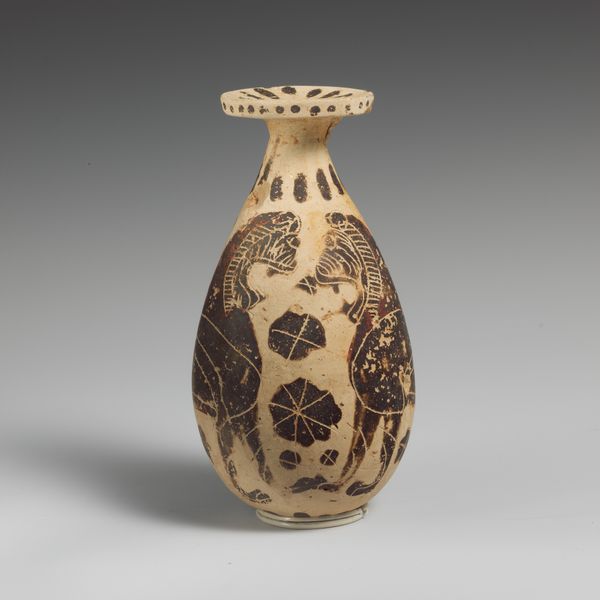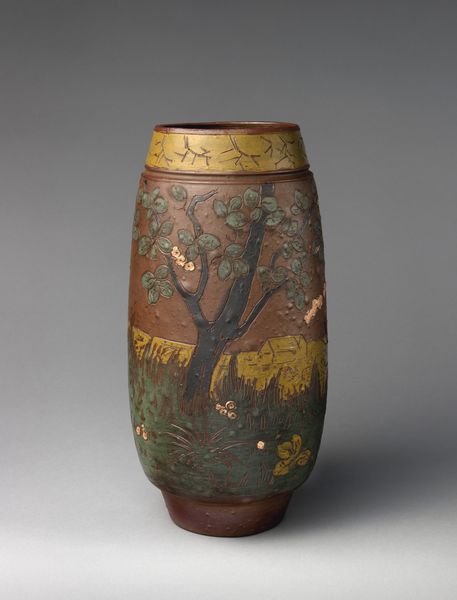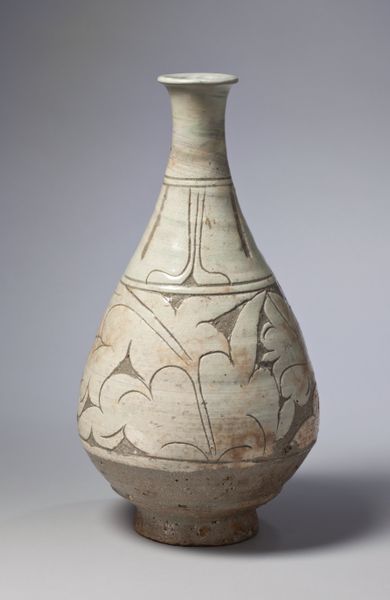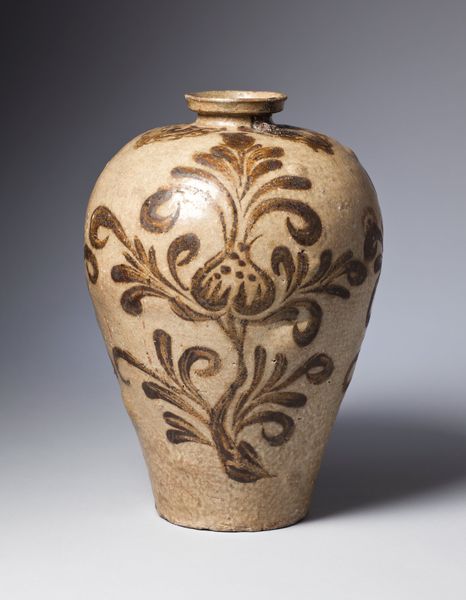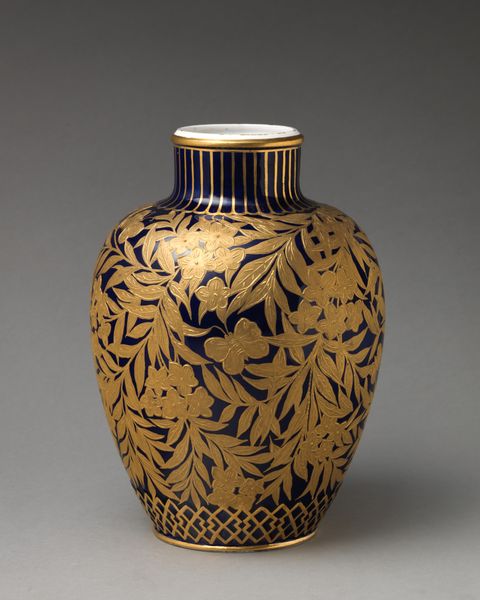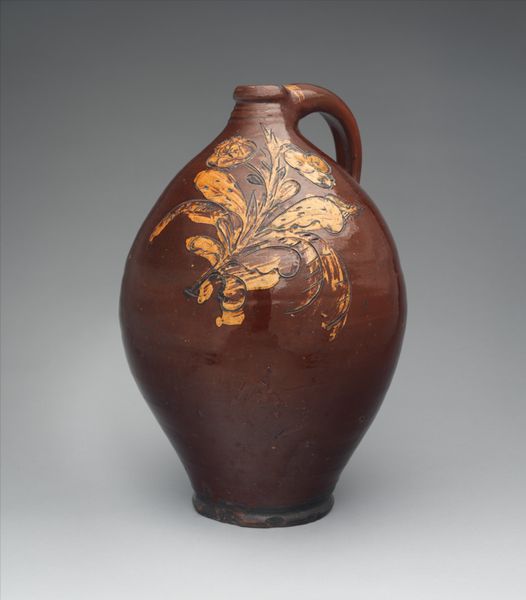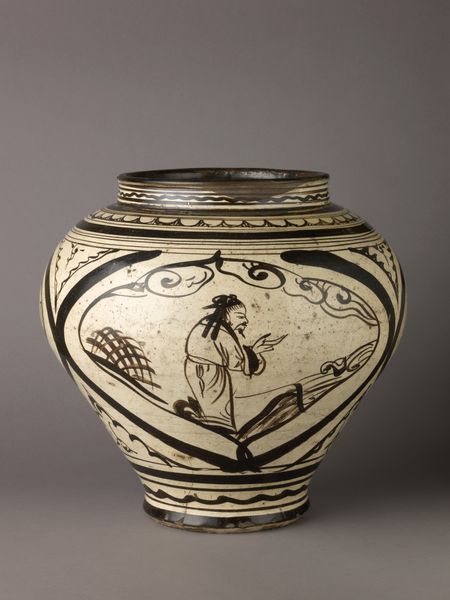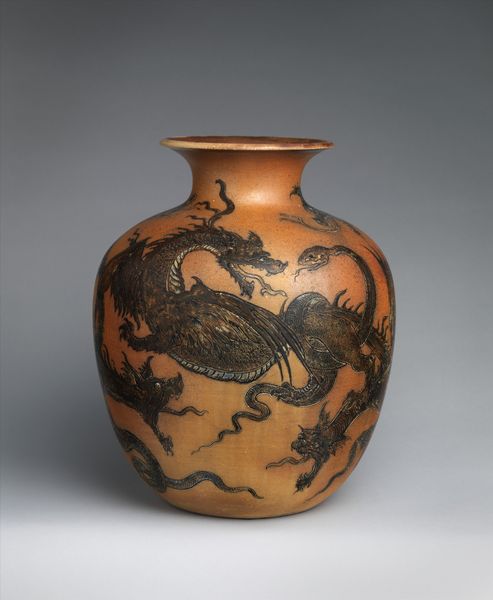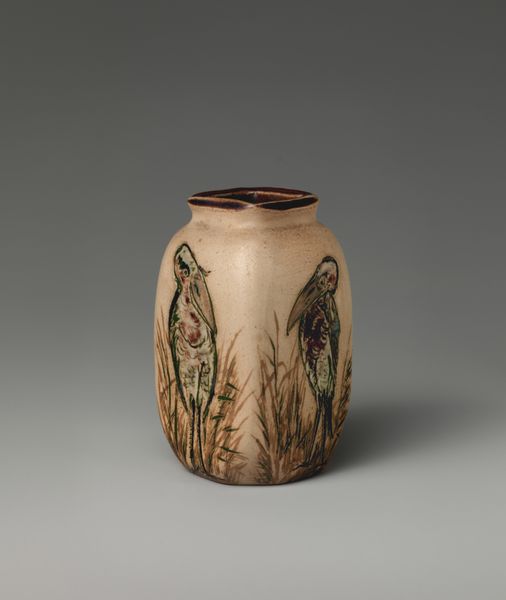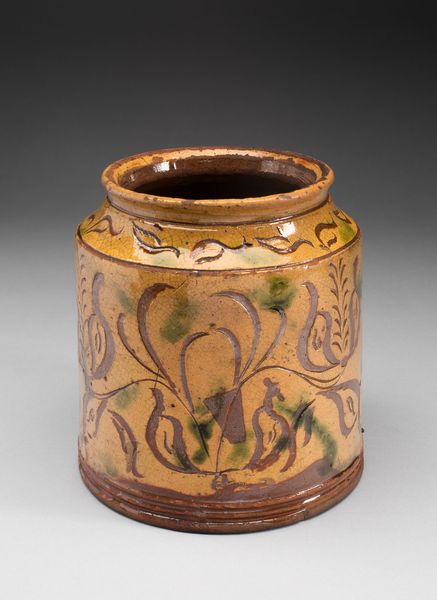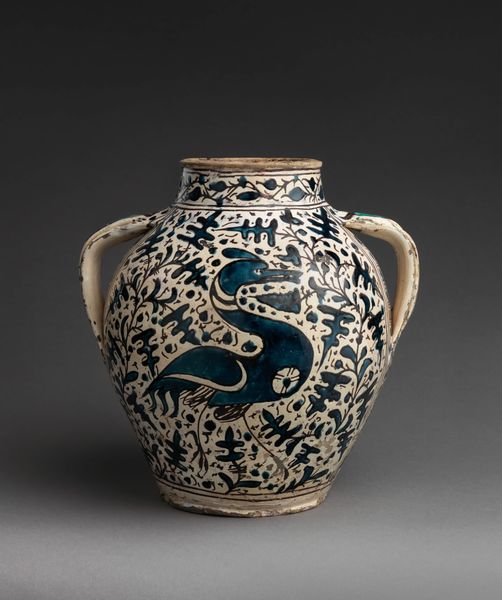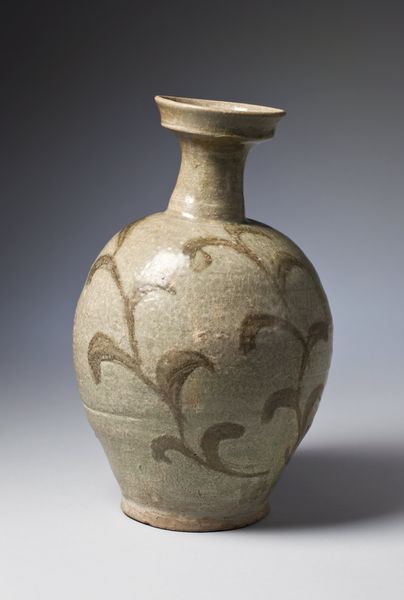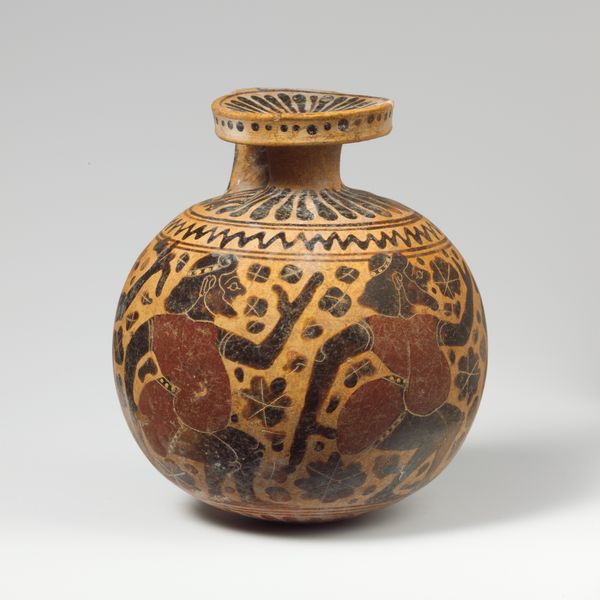
ceramic, sculpture
#
ceramic
#
bird
#
stoneware
#
sculpture
#
ceramic
#
decorative-art
Dimensions: Overall (confirmed): 9 × 3 7/8 × 3 1/4 in. (22.9 × 9.8 × 8.3 cm)
Copyright: Public Domain
Curator: R. W. Martin and Brothers created this "Bottle vase with birds" in 1899. It's a ceramic stoneware piece here at The Metropolitan Museum of Art. Editor: My first impression? A bit melancholic, like a Victorian taxidermy display but rendered in clay. The palette, with that faded ochre, is muted, yet there’s an almost cartoonish boldness to the etched birds. Curator: Indeed. Observe the vase's structure—the squared-off lip contrasts sharply with the otherwise organic, tapering form. This juxtaposition creates a tension that is echoed in the relationship between the textured body and the smooth, linear drawings. Semiotically, the bird motif here is important. Editor: Absolutely. Those aren't just any birds, are they? They appear to be… captives? I'm seeing such incredible detail: etched lines capture every feather, even a chain wrapped around its leg! Are we meant to ponder themes of freedom versus restraint? Curator: It’s a fair reading. The subdued coloration serves to foreground the incised drawings. These birds, almost grotesque, invite interpretation through a social or political lens. It also reminds me a bit of some of the work of Honoré Daumier. Editor: There's also something quietly subversive about presenting such raw, ungainly birds on a vessel that, functionally, implies delicacy and refinement. You know, like serving wild honey from a skull. It has a very William Blake feel, don’t you think? Curator: Perhaps. This interplay is typical of decorative art from this period. The application of high artistic skill towards everyday objects provokes intriguing social questions through both material and form. The function is aesthetic rather than utilitarian. Editor: This piece almost seems like an outsider artist’s interpretation of high-end ceramics—there is a playful crudeness that undermines formality. But the craftsmanship—wow. You could get lost in the texture of the ceramic alone. Curator: Yes. A testament to the period. I found myself studying just the gradation from pale top to the orange tones around the base. Well, I do think this conversation has illuminated quite well some complex attributes of this fascinating piece. Editor: For sure. Every time I gaze into its stony eyes I find something new in this odd, sad little avian. Its beauty certainly lingers, doesn't it?
Comments
No comments
Be the first to comment and join the conversation on the ultimate creative platform.
